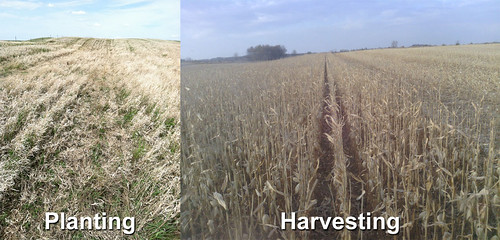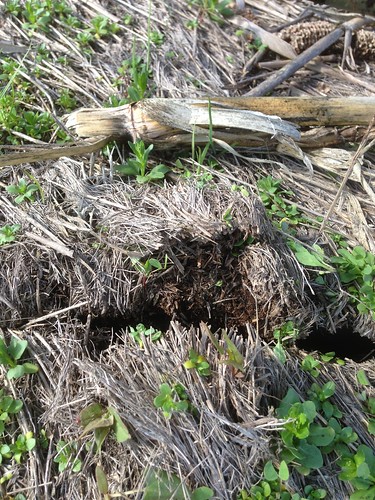
Attending a no-till conference forever changed the way North Dakota farmer Mark Jennings farmed. He started using basic conservation practices for conserving moisture.
For the past decade he’s been sowing cover crops and reaping rich returns.
Working closely with the USDA’s Natural Resources Conservation Service, Jennings has become a devoted no-till farmer.
At the 2014 Agricultural Outlook Forum, the North Dakota farmer presented his story to a crowded room at the “Economics of Conservation” seminar. USDA hosts the two-day forum.
“I’m working towards sustainability by copying Mother Nature, and Mother Nature doesn’t till,” said Jennings, who grows wheat, sunflowers, corn, soybeans, peas, flax, oats, canola, barley and a variety of cover crops.
“The biological livestock in the ground can do tillage for you,” Jennings said. “There are over a billion organisms in a teaspoon of healthy soil. Tilling destroys them.
Jennings had to overcome obstacles when he switched to no-till. In addition to learning a new way of farming, he faced pressure for trying something different.
“They told me that’s not the way you’re supposed to farm,” Jennings said. He smiled as he clicked through a series of before-and-after pictures of his land. The results speak for themselves.
Showing a picture of layered organic matter covering his soil, he said: “This is money in the bank, and dollars sitting on the soil. The exact value might be hard to measure, but it’s very real.”

Since switching to no-till, Jennings has seen increased water holding capacity and better infiltration. He saves money on fuel and fertilizer. He saves time. His soil is healthier, and his yields are larger.
Asked by a member of the audience how cover crops help soil maintain moisture, Jennings replied:
“Imagine a wet towel lying on the ground. If you cover that towel with a blanket, the water won’t evaporate nearly as fast. Cover crops are an organic blanket that helps soil retain water.”
Jennings encourages farmers interested in conservation to visit NRCS.
“They helped me create a conservation plan for my land, and their financial assistance helped me get started by sharing the costs,” he said. “Also, the online Web Soil Survey is a great tool for learning about your soil. I use it all the time.”
Jennings ended his presentation with this advice: “Don’t work the soil, let the soil work for you.”



